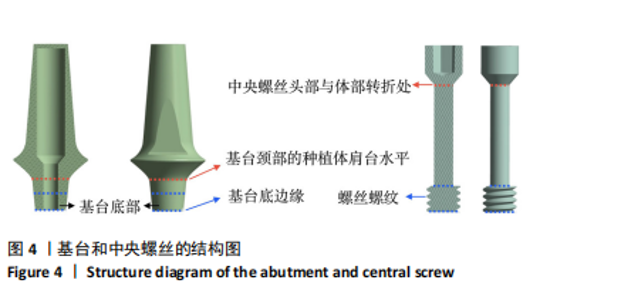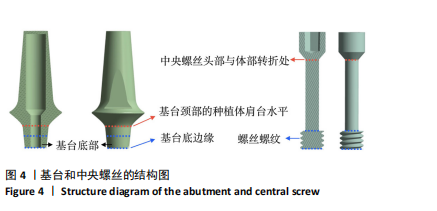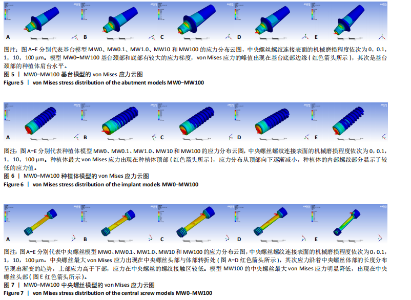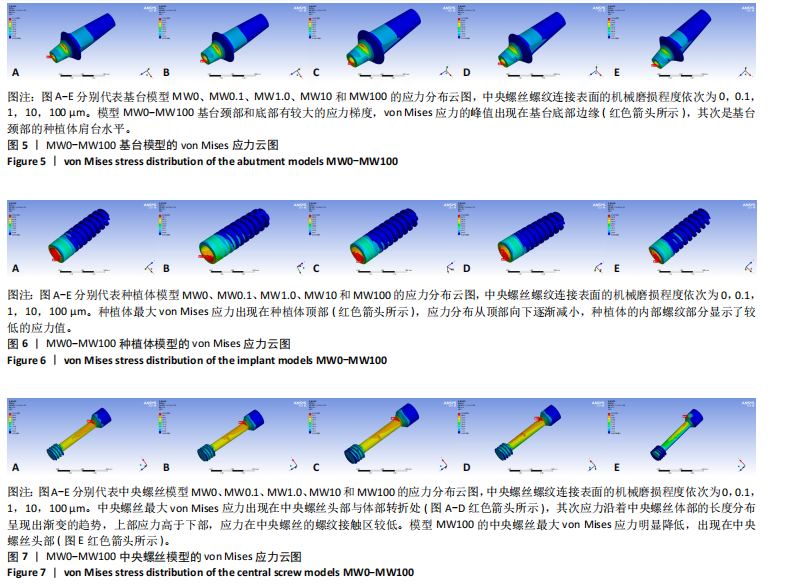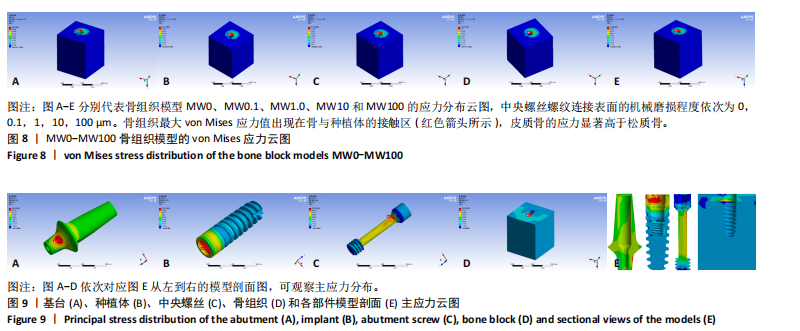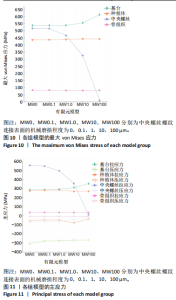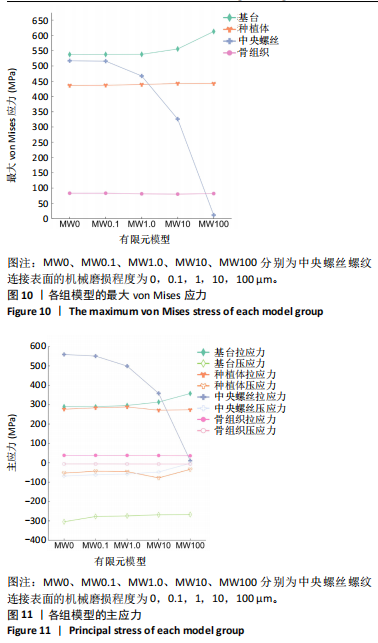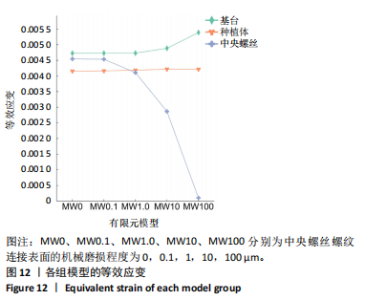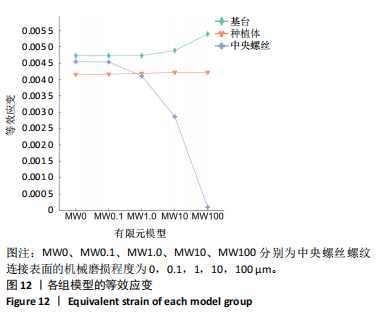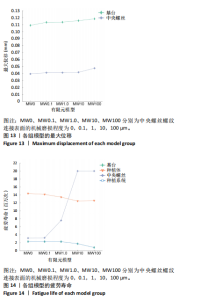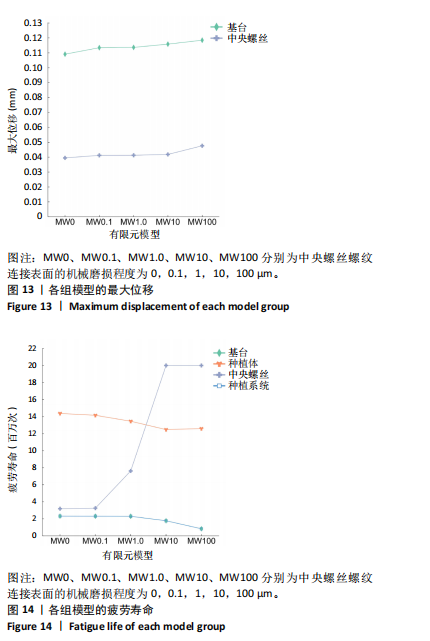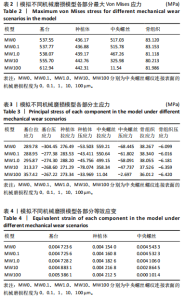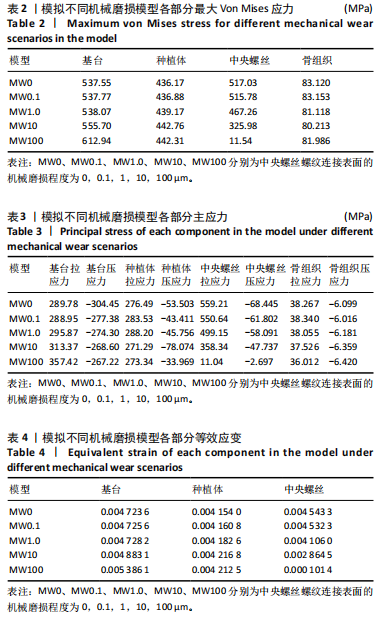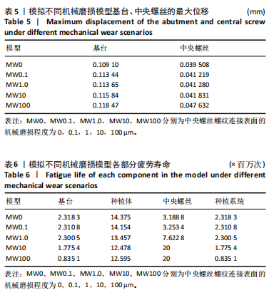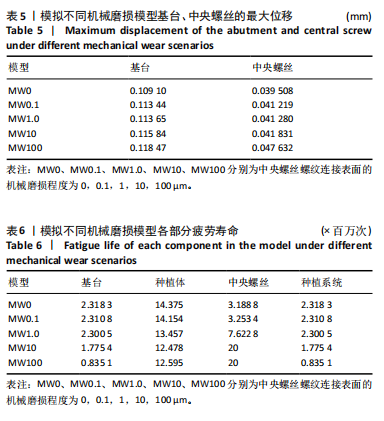[1] HUANG Y, WANG J. Mechanism of and factors associated with the loosening of the implant abutment screw: A review. J Esthet Restor Dent. 2019;31(4):338-345.
[2] LEE DW, KIM NH, LEE Y, et al. Implant fracture failure rate and potential associated risk indicators: An up to 12-year retrospective study of implants in 5,124 patients. Clin Oral Implants Res. 2019;30(3):206-217.
[3] VINHAS AS, AROSO C, SALAZAR F, et al. Review of the Mechanical Behavior of Different Implant-Abutment Connections. Int J Environ Res Public Health. 2020;17(22):8685.
[4] SAHA S, ROY S. Metallic Dental Implants Wear Mechanisms, Materials, and Manufacturing Processes: A Literature Review. Materials (Basel). 2022;16(1):161.
[5] PANDEY C, BHATTARAI BP, RIDDHABHAYA A, et al. Healing Abutment Distortion in Implant Prostheses: An In Vitro Study. J Funct Biomater. 2022;13(3):85.
[6] WEISS EI, KOZAK D, GROSS MD. Effect of repeated closures on opening torque values in seven abutment-implant systems. J Prosthet Dent. 2000;84(2):194-199.
[7] ADAWI HA, DEWAN H, KHAWAJI A, et al. Effects of Blood Contamination and Decontamination Protocol on Reverse Torque Value of Abutment Screws in Dental Implants: An In Vitro Study. Biomimetics (Basel). 2023;8(2):157.
[8] VINHAS AS, SALAZAR F, MENDES JM, et al. SEM Analysis and Micro-CT Evaluation of Four Dental Implants after Three Different Mechanical Requests-In Vitro Study. Materials (Basel). 2024;17(2):434.
[9] SCHMITT CM, NOGUEIRA-FILHO G, TENENBAUM HC, et al. Performance of conical abutment (Morse Taper) connection implants: a systematic review. J Biomed Mater Res A. 2014;102(2):552-574.
[10] HUNG HC, HUANG CS, PAN YH. The compressive strength of implant-abutment complex with different connection designs. J Dent Sci. 2019; 14(3):318-324.
[11] CABALLERO C, RODRIGUEZ F, CORTELLARI GC, et al. Mechanical Behavior of Five Different Morse Taper Implants and Abutments with Different Conical Internal Connections and Angles: An In Vitro Experimental Study. J Funct Biomater. 2024;15(7):177.
[12] MATSUOKA T, NAKANO T, YAMAGUCHI S, et al. Effects of Implant-Abutment Connection Type and Inter-Implant Distance on Inter-Implant Bone Stress and Microgap: Three-Dimensional Finite Element Analysis. Materials (Basel). 2021;14(9):2421.
[13] YANG F, RUAN Y, LIU Y, et al. Abutment mechanical complications of a Morse taper connection implant system: A 1- to 9-year retrospective study. Clin Implant Dent Relat Res. 2022;24(5):683-695.
[14] ZHANG WT, CHENG KJ, LIU YF, et al. Effect of the prosthetic index on stress distribution in Morse taper connection implant system and peri-implant bone: a 3D finite element analysis. BMC Oral Health. 2022;22(1):431.
[15] KALISPERAKIS I, STENTOUMIS C, GRAMMATIKOPOULOS L, et al. Precise 3D recording for finite element analysis. Proceedings of the 2015 Digital Heritage, 2015:121-124.
[16] SUN F, CHENG W, ZHAO BH, et al. Evaluation the loosening of abutment screws in fluid contamination: an in vitro study. Sci Rep. 2022;12(1):10797.
[17] AMERCAN SOCIETY FOR TESTING AND MATERIALS. ASTM G77-17 Standard Test Method for Ranking Resistance of Materials to Sliding Wear Using Block-on-Ring Wear Test. West Conshohocken, PA: ASTM International, 2022.
[18] AMERCAN SOCIETY FOR TESTING AND MATERIALS. ASTM G98-23 Standard Test Method for Galling Resistance of Materials. West Conshohocken, PA: ASTM International, 2023.
[19] CHANG HC, CHANG CH, LI HY, et al. Biomechanical analysis of the press-fit effect in a conical Morse taper implant system by using an in vitro experimental test and finite element analysis. J Prosthet Dent. 2022;127(4):601-608.
[20] CHANG HC, LI HY, CHEN YN, et al. Mechanical analysis of a dental implant system under 3 contact conditions and with 2 mechanical factors. J Prosthet Dent. 2019;122(4):376-382.
[21] FIORILLO L, CICCIÙ M, D’AMICO C, et al. Finite Element Method and Von Mises Investigation on Bone Response to Dynamic Stress with a Novel Conical Dental Implant Connection. Biomed Res Int. 2020; 2020:2976067.
[22] POURNASROLLAH A, NEGAHDARI R, GHAREKHANI V, et al. Investigating the effect of abutment-implant connection type on abutment screw loosening in a dental implant system using finite element methods. J Dent Res Dent Clin Dent Prospects. 2019;13(4):289-297.
[23] SAMMOUR SR, MAAMOUN EL-SHEIKH M, ALY EL-GENDY A. Effect of implant abutment connection designs, and implant diameters on screw loosening before and after cyclic loading: In-vitro study. Dent Mater. 2019;35(11):e265-e271.
[24] BARREIROS P, NEVES L, AROSO C, et al. Comparison in Four Different Implant Systems of Mechanical Resistance to Maximal Stress in Prosthetic Screws-An In Vitro Study. Dent J (Basel). 2020;8(4):116.
[25] PARK SJ, LEE SW, LEESUNGBOK R, et al. Influence of the connection design and titanium grades of the implant complex on resistance under static loading. J Adv Prosthodont. 2016;8(5):388-395.
[26] PARNIA F, NOURIZADEH A, SHAFIEE E. Effect of implant‒abutment connections on abutment screw loosening: An in vitro study. J Dent Res Dent Clin Dent Prospects. 2024;18(1):17-22.
[27] HONÓRIO TONIN BS, HE Y, YE N, et al. Effects of tightening torque on screw stress and formation of implant-abutment microgaps: A finite element analysis. J Prosthet Dent. 2022;127(6):882-889.
[28] VINHAS AS, AROSO C, SALAZAR F, et al. In Vitro Study of Preload Loss in Different Implant Abutment Connection Designs. Materials (Basel). 2022;15(4):1392.
[29] GERMÁN SANDOVAL R, ORTIZ MAGDALENO M, SÁNCHEZ ROBLES P, et al. Analysis of the Mechanical Behavior and Effect of Cyclic Fatigue on the Implant-Abutment Interface. Odovtos Int J Dent S. 2020;23(2):208-218.
[30] KOWALSKI J, PUSZKARZ AK, RADWANSKI M, et al. Micro-CT Evaluation of Microgaps at Implant-Abutment Connection. Materials (Basel). 2023;16(12):4491.
[31] D’ERCOLE S, DOTTA TC, FARANI MR, et al. Bacterial Microleakage at the Implant-Abutment Interface: An In Vitro Study. Bioengineering (Basel). 2022;9(7):277.
[32] RIBEIRO RF, MATA VBD, TOMASELLI LO, et al. Microbial Leakage through Three Different Implant-Abutment Interfaces on Morse Taper Implants In Vitro. Dent J (Basel). 2024;12(7):226.
[33] BLOCK MS. Evidence-Based Criteria for an Ideal Abutment Implant Connection-A Narrative Review. J Oral Maxillofac Surg. 2022;80(10):1670-1675.
[34] AL-SANEA A, AKTAS S, CELIK T, et al. Effects of the internal contact surfaces of dental implants on screw loosening: A 3-dimensional finite element analysis. J Prosthet Dent. 2023;130(4):603.e1-603.e11.
[35] KANNEGANTI KC, VINNAKOTA DN, POTTEM SR, et al. Comparative effect of implant-abutment connections, abutment angulations, and screw lengths on preloaded abutment screw using three-dimensional finite element analysis: An in vitro study. J Indian Prosthodont Soc. 2018;18(2):161-167.
[36] CALAZANS NETO JV, CELLES CAS, DE ANDRADE CSAF, et al. Recent Advances and Prospects in β-type Titanium Alloys for Dental Implants Applications. ACS Biomater Sci Eng. 2024;10(10):6029-6060.
[37] COELHO L, MANZANARES-CÉSPEDES MC, MENDES J, et al. Coating Materials to Prevent Screw Loosening in Single Dental Implant Crowns: A Systematic Review. Materials (Basel). 2024;17(20):5053.
[38] ANGERMAIR J, IGLHAUT G, MEYENBERG K, et al. In vitro assessment of internal implant-abutment connections with different cone angles under static loading using synchrotron-based radiation. BMC Oral Health. 2024;24(1):396.
[39] CHEN YH, WU YL, CHEN HS, et al. Reverse Torque Value of Angulated Screw Channel Abutment before and after Cyclic Loading: An In Vitro Study. J Funct Biomater. 2023;14(3):124.
[40] RAMANAUSKAITE A, SADER R. Esthetic complications in implant dentistry. Periodontol 2000. 2022;88(1):73-85.
[41] ROSA C, BENTO V, DUARTE N, et al. Do dental implants installed in different types of bone (I, II, III, IV) have different success rates? A systematic review and meta-analysis. Saudi Dent J. 2024;36(3):428-442.
|
